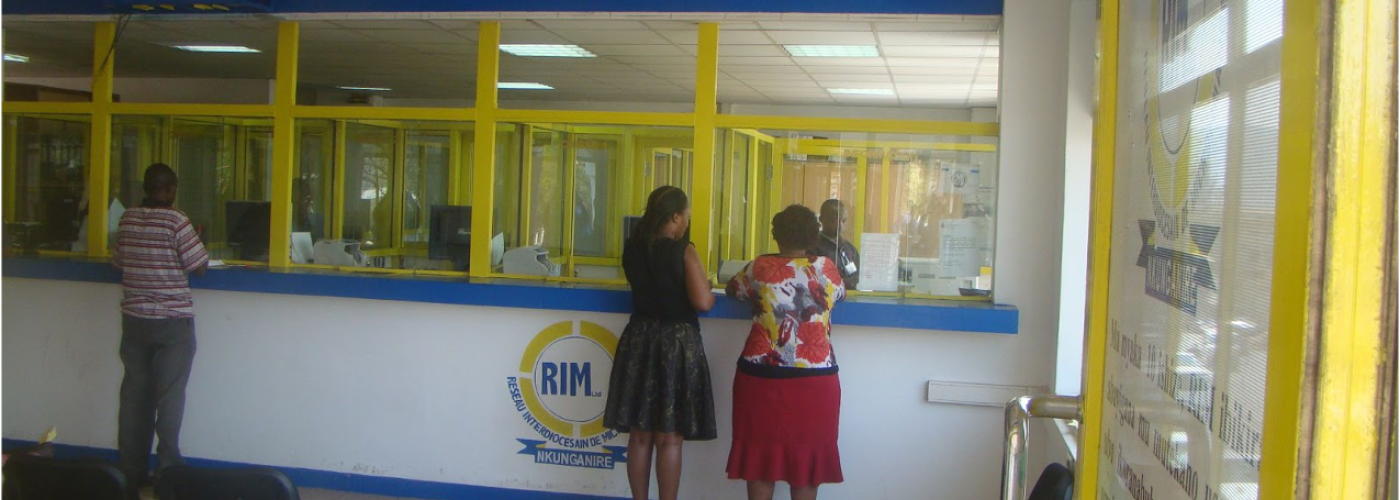Reaping the Benefits of Agribusiness Financial Products: The Experience of a Rwandan MFI
Image

This blog was authored by the Feed the Future Rwanda Nguriza Nshore team and was originally published on NgurizaNshore.rw
Rwanda is home to 18 licensed microfinance institutions (MFI), with 48% of Rwandans engaged in market-oriented agriculture, the largest proportion this sector has seen in five years (Labour Force Survey Annual Report 2021, National Institute of Statistics of Rwanda). With this growth, opportunities began emerging country-wide to service a burgeoning agricultural client base. Additionally, Rwandan MFI, Réseau Interdiocésain de Microfinance (RIM), recognized how specified services could be used and were needed to further support this industry. Thus, in 2021 RIM partnered with Feed the Future Rwanda Nguriza Nshore to develop an agribusiness strategy aimed at re-engineering their existing agribusiness unit thus supporting this customer base.
Prior to the development of the agribusiness unit and strategy, RIM considered agribusiness customers like any other SME client, neither following up nor tracking their specific use of services. But in practice, agricultural businesses, including SMEs, are subject to different kinds of risks requiring different types of financing strategies. By tracking how these SMEs use financial products, as well as formalizing their feedback based on their experience and how they might value a service, RIM could increasingly tailor business strategies, tactics, and product adaptations to increase their competitive advantage over time by bolstering the value provided to their ag. SME clients. A decisive aspect of RIM’s new strategy and lending unit includes tailored and specific products targeting agribusiness customers and a systematic means to track these clients. RIM’s strategy incorporates assessments of agricultural productivity, which include specific agricultural market analysis related to seasonality, commercial crop viability, climate risks, etc. In addition, each portfolio includes risk assessment and analysis related to crop and region so that RIM is not overexposed in either regard. This risk analysis includes examining the potential for generating a commercially viable gross margin while considering factors such as price, inflation, and climate.
Since RIM began incorporating these analytics into their services and designing specific products based on these benchmarks, the MFI has seen a significant increase in the number of agribusiness customers. By measuring success in terms of the percentage of agricultural loans and the quality of the portfolio, the results are clear. When looking at the percentage of agricultural loans compared to RIM’s entire loan portfolio, the end of 2020 saw agriculture at 20%. By the end of 2021, this number had increased to 31%. In addition, portfolio quality (credit at risk) has successfully decreased, with 2020 seeing credit at risk at 11% and 4% in 2021.
Portfolio distribution among different client demographics is a particularly important measure of success, especially in relation to Rwanda’s Development Goal of inclusion. When looking at gender, for example, in 2020, most loan users were male, with women making up only 27% of the share. However, with RIM’s new strategy, there is an increase in women accessing and using these tailored agribusiness products at 32%. At the end of 2021, RIM was piloting specific products for women in agribusiness, and RIM expects to launch these fully in the coming months of 2022. Looking at youth engagement, before the strategy and unit was mobilized, youth made up approximately 1% of total agribusiness loans. As of March 2022, these numbers have increased to 11% of loans and targeted products are continually reinforced and advertised to this customer segment through flyers and youth-centered events.
With demand for their agribusiness products and services growing, RIM’s focus is now on expanding to have at least one agricultural loan officer specialist at each of their 11 branches across the country. To further support the agribusiness customer segment, RIM partnered with Nguriza Nshore to train 90 staff members on the implementation of the agribusiness strategy, and provide them with tools to collect analytics for subsequent new product development.
RIM is taking a customer-oriented business growth strategy. In addition to the increased training of loan officers, RIM is furthering its customer management tactics to optimize customer satisfaction and retention. For example, RIM has monthly meetings to gauge satisfaction and assess any fluctuations in customer retention. If clients have opted out of RIM’s services, surveys and interviews promptly pinpoint what contributed to the decision, and feedback from these calls influence future loan offerings and savings products. With a multi-pronged commitment to promoting beneficial agriculture behavior, the horizon is the limit with RIM’s agribusiness strategy.

